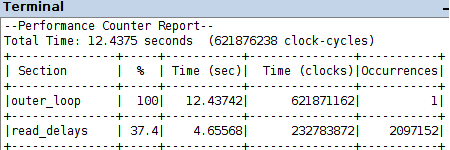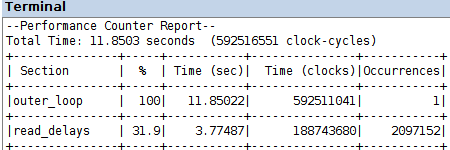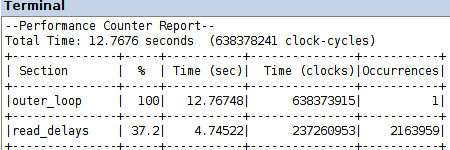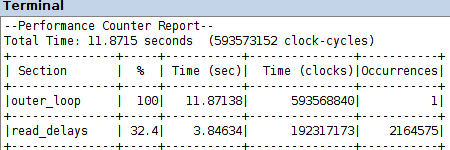DMI – Graduate Course in Computer Science
Copyleft
![]() 2020 Giuseppe Scollo
2020 Giuseppe Scollo
this tutorial deals with:
development main phases:
two-step production of the VHDL description of the multicore coprocessor:
the respective sources delay_collatz.vhd and multicore_delay_collatz.vhd are available in folder vhdl of the attached archive, as well as in the VHDL/code/e12 folder of the reserved lab area
the coprocessor is endowed with the core_select n-bit input, that encodes the core which the I/O operation is addressed to, while the done outputs of the individual cores are exposed as global status in a 2n-bit parallel output port
empty folders delay_collatz, mc_delay_collatz, and mc_interface are meant to host compilation and simulation projects for the two mentioned sources and the next one; folders with the same names under tests provide respective input files for simulation
an instance of the multicore coprocessor component is embedded in the Avalon memory-mapped interface described by multicore_delay_collatz_avalon_interface.vhd and accesses the following Avalon bus signals:
the gathering of the 64-bit input for the coprocessor thus takes two bus cycles, therefore the interface must store the first-cycle data and later concatenate it with the second-cycle data; this leads to the classical two-process structure of the description:
on the other hand, the 32-bit output of a 16-bit data produced by a coprocessor core requires a zero-extension of the latter, that is done by the interface
consultation of multicore_delay_collatz_avalon_interface.vhd shows the relationships between the I/O signals of the computational component and the Avalon interface signals
the Qsys construction of a Nios II system with the coprocessor component, similar to that of the previous lab tutorial, assigns the coprocessor a base address and, starting at it, a memory area for its I/O registers
the following register map also shows the coprocessor component signals determined by the corresponding register offsets, indexed by the value of core_select in parentheses, where k = 2n is the number of parallel cores, and with legenda :
| ro | signal | ao | ro | signal | ao | |
| 0 | x0(0)[31..0] | 0 | 2k | delay(0) | 8k | |
| 1 | x0(0)[63..32] | 4 | ... | |||
| ... | 3k-1 | delay(k-1) | 12k-4 | |||
| 2(k-1) | x0(k-1)[31..0] | 8(k-1) | 3k | status | 12k | |
| 2k-1 | x0(k-1)[63..32] | 8k-4 |
the subsequent development phases are similar to those of the previous lab tutorial:
the Qsys construction of the Nios II system goes quicker if performed as a modification of the Qsys system out of the previous lab tutorial, by removing the delay_collatz_avalon_interface component and adding an instance of the multicore_delay_collatz_avalon_interface component
the TCL scripts for the generation of the software driver in the project BSP, provided in folder codesign/ip/multicore_delay_collatz_avalon_interface of the attached archive, are similar to those of the previous lab tutorial
the C sources of the software driver, provided in folder HAL under the same path, differ from those of the previous lab tutorial in the following aspects:
the test and performance measurement programs provided in folders codesign/amp* of the attached archive compute the delay for 2M initial points, starting with X_BASE = 1128784494896128
in both versions of the test, the program assigns core j the delay computation for the initial points x0 in the congruence class j = x0 mod MDC_N_CORES, thus for 2M/32 = 64K trajectories (on the average in the second version); the difference between the versions in codesign/amp_s* and those in codesign/amp_t* is as follows:
project creation parameters for the Monitor Program are summarized in the attached file MulticoreMonitorNotes.txt
compilation, loading on the FPGA and execution of program sequential_multicore_delay_collatz_timing.c, in the two projects codesign/amp_s and codesign/amp_s_o3, produces the Performance Counter Reports in the figure


the next Performance Counter Reports come out of the execution of program statustest_multicore_delay_collatz_timing, in the two projects codesign/amp_t and codesign/amp_t_o3


useful materials for the proposed lab experience: